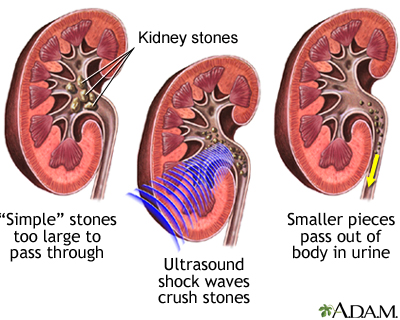Comprehensive Guide to Kidney Stones vs UTI: Medical Diagnosis, Causes, and Relief
Comprehensive Guide to Kidney Stones vs UTI: Medical Diagnosis, Causes, and Relief
Blog Article
Comprehending the Trick Distinctions In Between Kidney Stones and Urinary System Tract Infections: An Extensive Overview for People
Understanding the distinctions between kidney stones and urinary tract infections (UTIs) is necessary for patients who may be experiencing similar symptoms yet deal with greatly various health and wellness obstacles. As we discover these critical aspects, it becomes clear that recognizing the distinct qualities of each condition can exceptionally affect individual results.
Introduction of Kidney Stones
The formation of kidney stones, a agonizing and commonly incapacitating condition, underscores the essential value of maintaining kidney health and wellness. The primary kinds of kidney stones include calcium oxalate, calcium phosphate, uric acid, struvite, and cystine stones, each with unique reasons and risk variables.
Several elements add to the development of kidney stones. Furthermore, metabolic problems and certain medical problems may predispose people to stone development.
Signs and symptoms of kidney stones can include serious flank pain, queasiness, and hematuria, which frequently trigger immediate clinical analysis. Therapy options vary, ranging from boosted liquid consumption and nutritional adjustments to clinical treatments such as lithotripsy or medical elimination, relying on the dimension and area of the stones. Comprehending these elements is crucial for reliable avoidance and monitoring.
Review of Urinary System System Infections
Urinary tract infections (UTIs) represent a common yet substantial wellness problem, influencing numerous individuals yearly. These infections occur when bacteria enter the urinary system, which includes the kidneys, ureters, bladder, and urethra. The bulk of UTIs are created by Escherichia coli, a kind of germs usually found in the gastrointestinal system. While UTIs can impact anybody, they are particularly widespread in females because of anatomical distinctions that assist in bacterial access.
The risk variables for establishing a UTI include sex-related activity, specific types of contraception, urinary retention, and a history of previous infections. People with weakened body immune systems or pre-existing conditions, such as diabetes, might also be at better risk. UTIs can be categorized into two major types: straightforward and complex. Straightforward UTIs are generally limited to the bladder and are extra common in healthy and balanced people, while complex UTIs might involve the kidneys and occur in those with underlying wellness issues.
Prompt medical diagnosis and treatment are necessary to stop difficulties, such as frequent infections or kidney damages (Kidney Stones vs UTI). Generally, UTIs are treated with anti-biotics, and precautionary procedures can be utilized for those with frequent events
Usual Symptoms Comparison
Symptoms of urinary system infections and kidney stones can frequently overlap, resulting in confusion in diagnosis. Both problems can offer with discomfort in the reduced abdomen or back, but the nature and location of the pain often vary. In urinary system tract infections (UTIs), clients usually experience a burning feeling during urination, constant advises to urinate, and cloudy or strong-smelling pee. On the other hand, kidney stones often tend to create serious, acute pain that emits from the back to the reduced abdomen and groin, often defined as colicky discomfort.
In addition, UTIs may be come with by fever and cools, particularly in much more extreme instances, while kidney stones can lead to nausea and vomiting due to intense pain. While discomfort throughout peeing is a hallmark of UTIs, kidney stones generally provide with even more severe pain episodes, which may go and come.
Medical Diagnosis Approaches
Just how can health care specialists properly differentiate between kidney stones and urinary tract infections? The diagnostic process begins with a complete clinical history and an in-depth evaluation of the individual's signs. Clinicians typically do a physical exam, which might expose tenderness in the abdominal area or flank area, special info leading the analysis path.
Research laboratory examinations play a crucial duty in differentiating between these two conditions. Kidney Stones vs UTI. A urinalysis can recognize the visibility of blood, crystals, or bacteria, which are indicative of either problem. In instances of urinary system infections, the urinalysis may show a substantial existence of white blood cells and nitrites, while kidney stones might offer with certain crystals
Imaging research studies, such as abdominal ultrasound or computed tomography (CT) checks, are important for visualizing kidney stones. These imaging techniques enable doctor to evaluate stone size, area, and possible blockages in the urinary system. On the other hand, urinary system system infections commonly do not need imaging unless complications are believed.
Together, these diagnostic approaches encourage medical care you can check here experts to precisely detect and distinguish in between kidney stones and urinary system tract infections, making sure that patients receive suitable treatment and management.
Therapy Options and Avoidance
While both kidney stones and urinary tract infections (UTIs) need punctual therapy, their management techniques differ considerably.
The therapy for kidney stones often entails pain monitoring, hydration, and sometimes, medical procedures such as extracorporeal shock wave lithotripsy (ESWL) or ureteroscopy to break or eliminate down stones. People are often recommended to increase fluid intake to promote stone flow and lower reoccurrence. Nutritional alterations may additionally be needed, relying on the stone kind.
On the other hand, UTIs are mainly treated with anti-biotics to remove the bacterial infection. The details antibiotic recommended depends upon the bacteria recognized and local resistance patterns. Extra actions, such as raised fluid intake and urinary analgesics, may help alleviate symptoms.
Prevention approaches vary too; for kidney stones, preserving adequate hydration and adhering to dietary limitations can be reliable. For UTIs, preventative strategies consist of correct hygiene methods, peing after sexual intercourse, and potentially prophylactic antibiotics for frequent infections. Understanding these therapy and prevention modalities is vital for efficient management and to reduce the risk of complications connected with both problems.
Final Thought

Understanding the distinctions in between kidney stones and urinary system infections (UTIs) is necessary for clients who may be experiencing comparable signs yet face greatly various health challenges. The main types of kidney stones consist of calcium oxalate, calcium phosphate, uric acid, struvite, and cystine stones, each with unique causes and risk elements.

Report this page